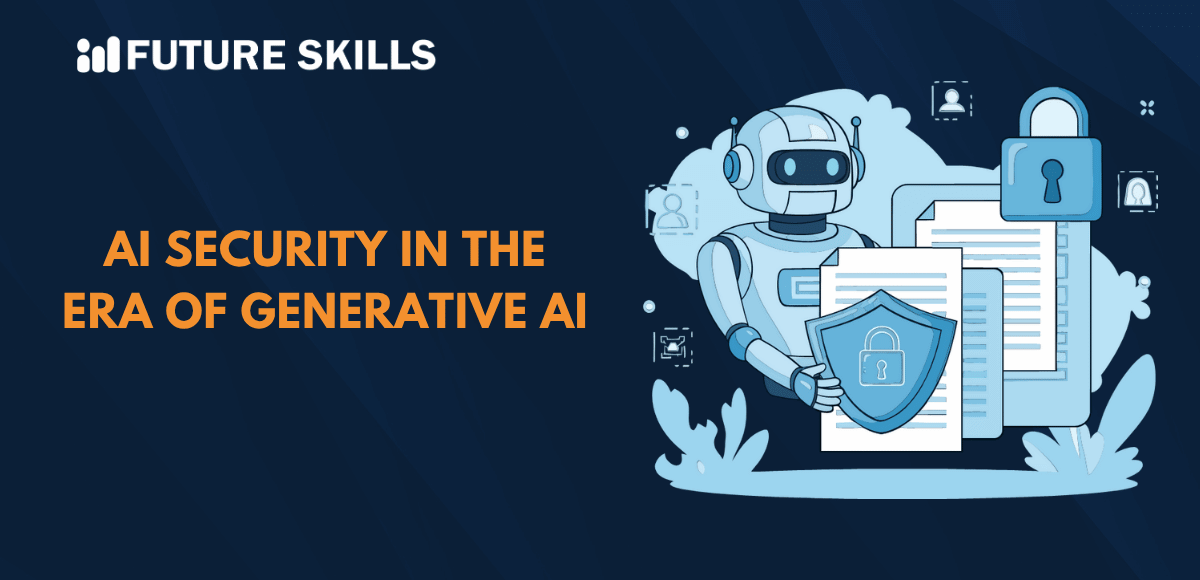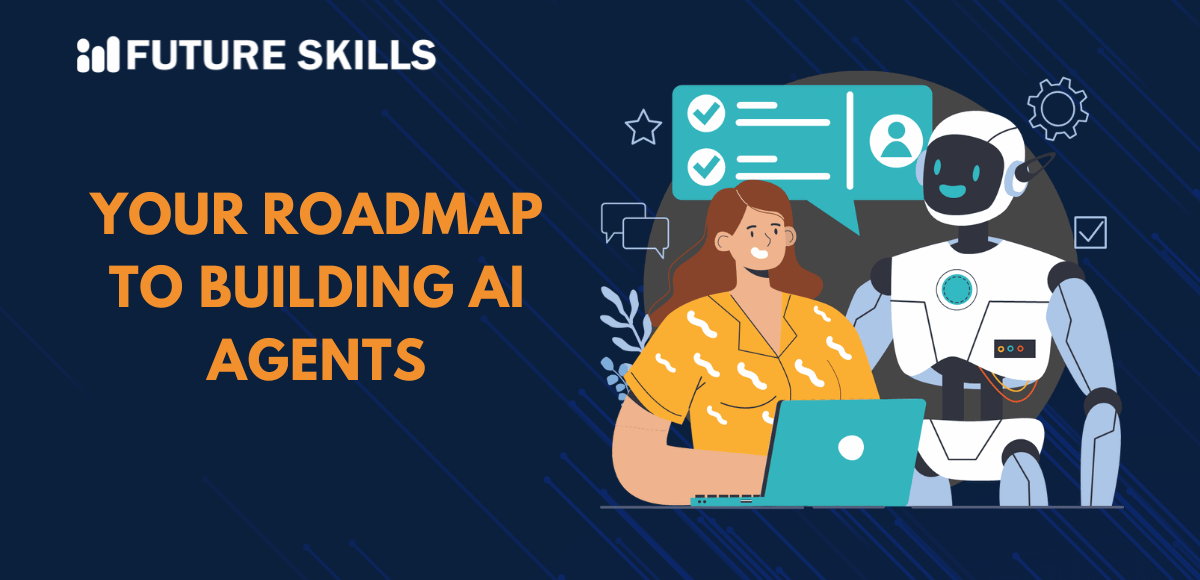The journey of the evolution of AI has been exceptionally remarkable from the beginning. Artificial intelligence started with basic algorithms that worked with predefined rules. The need for a super artificial intelligence guide emerged when the AI ecosystem came up with deep learning models that can mimic human intelligence. Deep learning models can simulate human cognitive processes to make decisions and solve problems, thereby making everyone think about the next stage in the evolution of AI.
The concept of super artificial intelligence or artificial super intelligence is hypothetical as of now. It might become the future of AI and surpass human intelligence in different aspects. Examples of artificial super intelligence or ASI have been noticed across many science fiction novels and movies. Let us learn more about super artificial intelligence or ASI and technologies that would serve as its building blocks.
Embark on your AI journey and become a certified AI expert with our popular Certified AI Professional (CAIP)™ course and explore different career prospects.
Discovering the Meaning of Super Artificial Intelligence

The first thing that you need to understand super artificial intelligence is a clear definition of the term. You can find different answers to questions like ‘what is super artificial intelligence’ from different sources. Super artificial intelligence or ASI is a hypothetical artificial intelligence system that has more intellectual capabilities than humans. It represents a super-intelligent AI with advanced cognitive abilities and thinking skills that are better than humans.
As of now, super artificial intelligence or artificial super intelligence is still a concept on paper. However, you can find some technological processes that serve as the building components of artificial super intelligence. The AI systems you witness today come under the category of artificial narrow intelligence or weak AI technology. Weak AI or narrow AI focuses on solving specific tasks such as language translation without the ability to develop new skills.
Weak AI does not have the ability to develop an in-depth understanding of the world around us as it depends on pre-programmed algorithms and data. The requirement of human intervention for effective functioning of AI systems creates concerns regarding the feasibility of artificial super intelligence. For instance, it is difficult to recreate the working mechanisms of the human brain through hardware and software.
Technologies for Building Super Artificial Intelligence
The possibility of building super artificial intelligence systems seems far from reality due to various reasons. You must have noticed super artificial intelligence examples only in books and movies. The Skynet network in the Terminator movie franchise is one of the examples of super artificial intelligence that becomes sentient and takes over the world. Fans of the Marvel Cinematic Universe must be familiar with J.A.R.V.I.S, another example of a super artificial intelligence system that can independently help Iron Man with different tasks.
It is important to remember that AI has a long way to go before it becomes something like J.A.R.V.I.S or Skynet. The first step towards developing artificial super intelligence systems involves the creation of artificial general intelligence or strong AI systems. Artificial general intelligence or AGI systems can learn new skills, understand the world and implement their skills for solving problems like humans. AGI would have the capabilities for learning and reasoning across different domains that would establish the foundations for super artificial intelligence.
Artificial general intelligence is also a hypothetical concept that is still on paper. You must look up to the core building blocks of ASI that would need more refining to develop super intelligent AI systems. Let us discover more insights on the disciplines that must grow further to transform ASI into reality.
-
Large Language Models and Huge Datasets
You can pick up any artificial super intelligence example in fiction to find that ASI systems can understand human language. ASI systems would need natural language processing capabilities of LLMs to understand natural language and interact with people. Super artificial intelligence systems would also need huge datasets that would help them learn and understand more about the world.
-
Neural Networks
Neural networks are the building blocks of deep learning models and aim to simulate human intelligence with better accuracy. The design of neural networks replicates the structure of the human brain with interconnected nodes representing neurons in the brain. Artificial super intelligence systems would have to use more advanced neural networks that are powerful and capable of complex reasoning.
-
AI-based Programming
AI-powered programming also stands as a promising factor for the development of super artificial intelligence. The super intelligence vs. artificial intelligence difference would depend on the effective use of AI systems for generating code and new applications. The freedom from human intervention would provide a strong foundation for creating independent and intelligent ASI systems.
-
Multisensory or Multimodal AI
Artificial super intelligence systems would have the abilities for processing and interpreting multiple variants of data inputs. Multisensory or multimodal AI can enable ASI systems to understand text, audio, video, and images for making decisions and performing tasks. The multisensory approach would outperform existing AI systems that rely only on one type of data, such as images or text.
-
Evolutionary Computation
Evolutionary computation algorithms are another significant building block for super artificial intelligence systems. It represents a type of algorithmic optimization that resembles biological evolution. The primary strength of evolutionary computation revolves around iterative improvement of the most effective solutions to a problem. The working of evolutionary algorithms is similar to natural selection and would support the continuous improvement of AI systems into super intelligent AI systems.
-
Neuromorphic Computing
One of the foremost highlights in a super artificial intelligence guide is the limitation on replicating the working of human brains through software and hardware. Neuromorphic computers solve the problem with hardware systems designed with the synaptic and neural structure of the human brain. Neuromorphic computing can offer formidable support for the development of super artificial intelligence in the future.
Navigating through the Advantages of Super Artificial Intelligence
The technologies underlying the foundations of super artificial intelligence systems would introduce some fundamental changes in the way our world works. Some experts also believe that artificial super intelligence or ASI systems would be the last invention by humanity. The benefits of super artificial intelligence would be evident in the fact that ASI systems would work as super intelligent and inexhaustible entities. Super artificial intelligence may introduce promising improvements across different sectors such as healthcare, politics, scientific research, and finance with diverse benefits.
Artificial super intelligence or ASI systems can find solutions to complex problems at better speed than traditional AI systems. You can use ASI systems to come up with new solutions in domains such as healthcare and space exploration.
Most of the super artificial intelligence examples in fiction present super intelligent systems that are less likely to make mistakes. The reduction of human error through ASI systems would open new opportunities for improving mundane tasks or ensuring accurate diagnosis.
Artificial super intelligence systems would also be capable of automating a broad range of tasks with more efficiency. Implementation of ASI systems in tasks that are dangerous for human users would also create safer work environments. Another important aspect of using ASI systems is the assurance of availability. Users can gain access to the powers of a super intelligent AI system that never stops working.
Are you ready to transform your business with AI? Enroll in our AI for Business course and understand the role and benefits of AI in any business.
Unraveling the Risks of Super Artificial Intelligence
The creation of super intelligent AI systems suggests that the world may witness productive improvements on a fundamental level. With super intelligent computer systems helping people with their everyday lives, work and business, life would become easier. At the same time, it is also important to pay attention to the risks that come with AI systems that can think independently. One of the foremost risks associated with ASI is that it can become self-aware and surpass human intelligence that may lead to unprecedented consequences.
The artificial super intelligence example of Skynet shows that superior cognitive abilities of ASI systems may enable them to manipulate systems. Artificial super intelligence can also gain access to advanced weapons, thereby showcasing the possibilities of existential risks. On top of it, automation through ASI systems may cause widespread unemployment that would lead to economic and social issues.
Malicious actors can leverage the advanced capabilities of ASI systems for unauthorized data collection, spreading misinformation and controlling the society. The evolution of ASI systems also creates risks of the lack of alignment with human values. For example, ASI systems may lack the morality and ethics of humans thereby causing ethical dilemmas. Most important of all, the broad range of capabilities of ASI systems can be responsible for uncontrollable and unpredictable behavior.
Final Thoughts
The promises associated with super intelligent AI systems showcase the potential for improvement in the existing AI ecosystem. The growing interest in queries like ‘what is super artificial intelligence’ indicates the fact that existing AI systems have limited capabilities. Evolution of AI systems from basic algorithms to deep learning models offers the ideal foundation for prospects to develop artificial super intelligence systems. Artificial super intelligence would help in creating AI systems that can surpass human intelligence with advanced cognitive capabilities.
The core building blocks of ASI include neural networks, large language models and AI-powered programming. These technologies would have to grow to make ASI a reality. While super artificial intelligence presents multiple advantages, it is also important to pay attention to its risks. Learn more about super artificial intelligence and find out how it will change the world.







